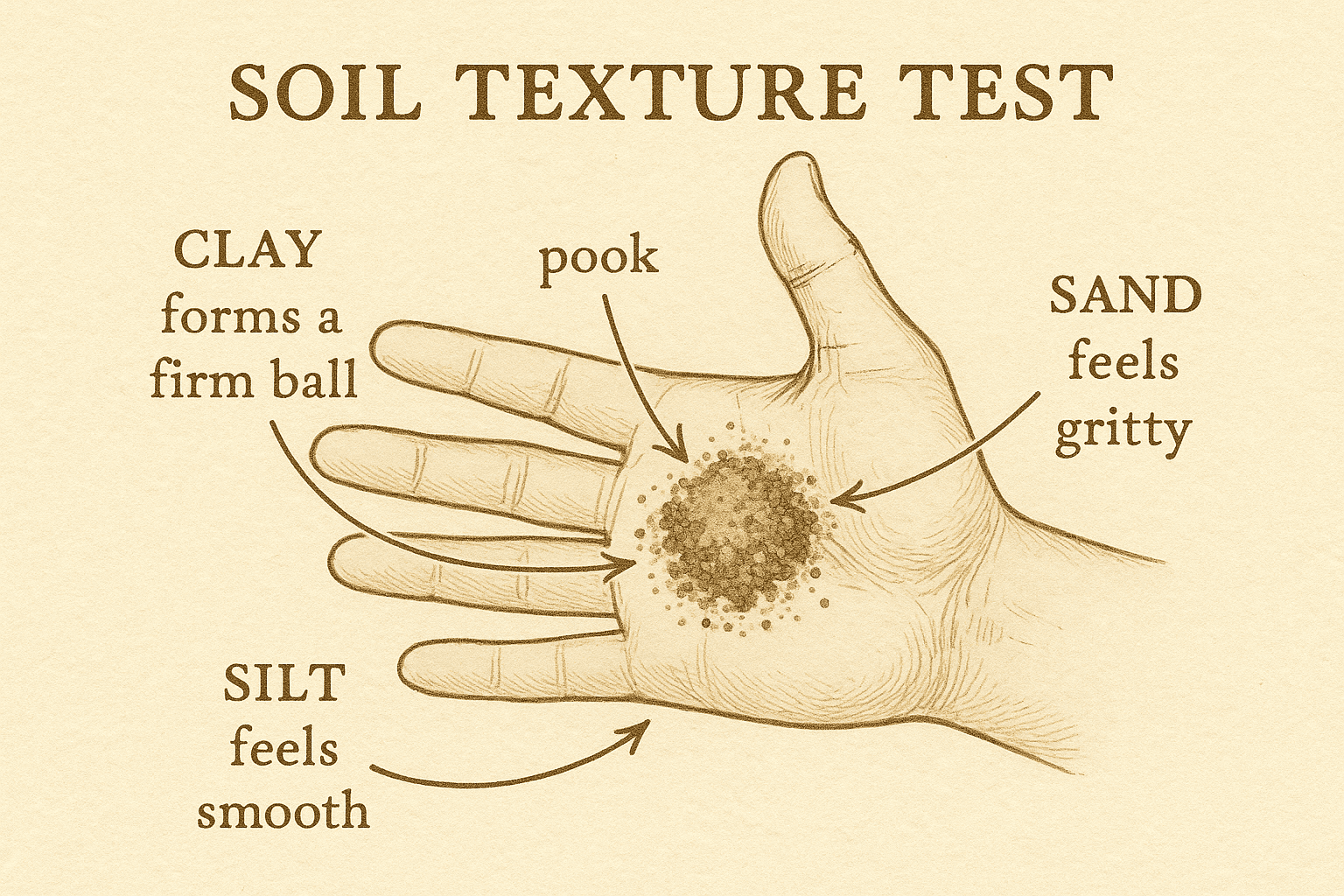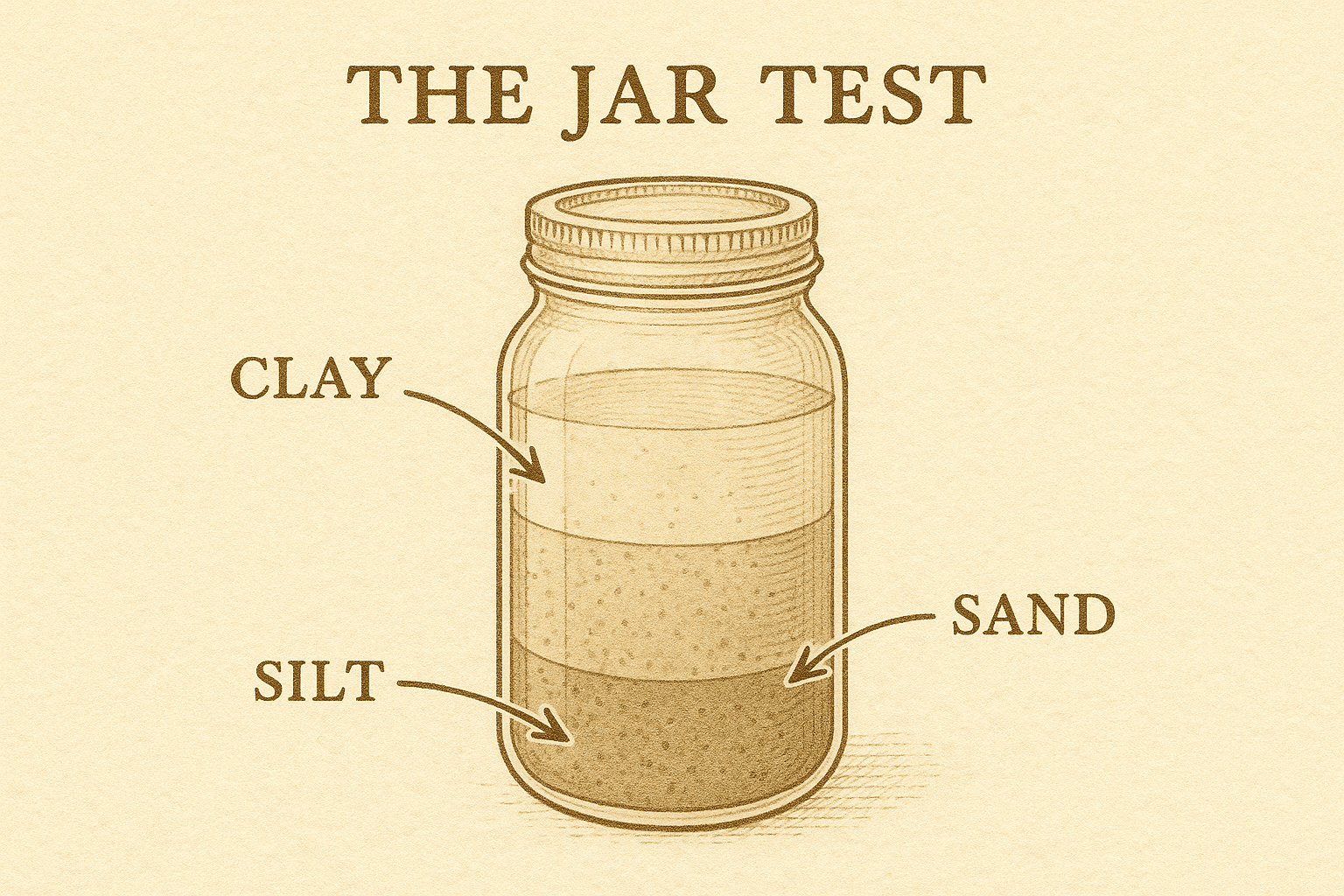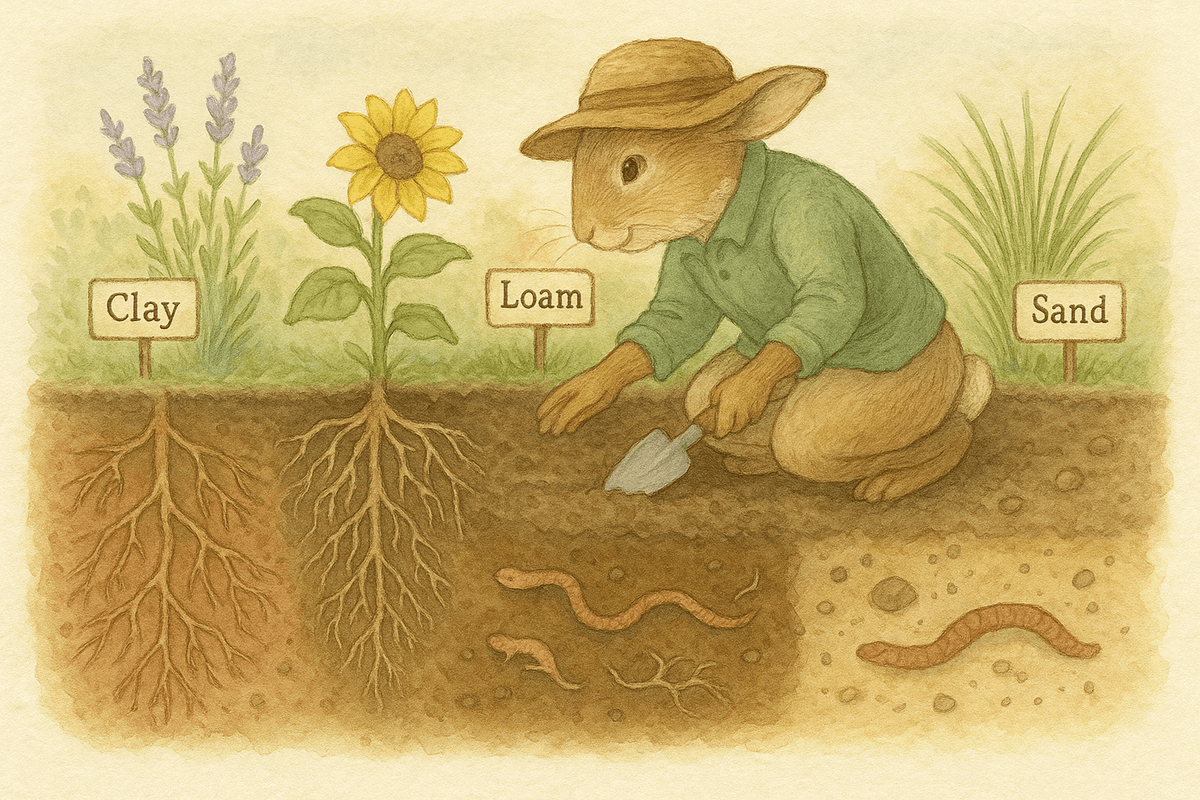Understanding Your Soil: Clay, Loam, Sand, and the Secret Life Beneath Our Feet
If there’s one thing every gardener learns — often the muddy way — it’s that all soil is not created equal. Some gardens offer velvety, dark earth that smells faintly of mushrooms and rain. Others serve up stubborn, sticky clay that clings to your boots like wet cement. But here’s the lovely truth: whatever kind of soil you’ve got, it’s full of possibility once you understand how it behaves.
When I first started gardening here in the misty Pacific Northwest, I thought soil was just… dirt. Then I dug my first border and realized the ground had its own personality — moody, rich, stingy, generous — depending on the day and the weather. Learning its quirks changed everything.
So let’s dig in (literally) and meet the cast of characters living under our feet.
Clay Soil — The Slow and Steady Type
Clay soil is the strong, silent type — packed tight with fine particles that hold onto water for dear life. In spring, it’s a slippery mess; by summer, it cracks like a dry riverbed. But hidden in that stubbornness is a gift: clay is incredibly rich in nutrients. Plants just need you to help them breathe.
How to work with it:
Add compost or leaf mould regularly to open up the texture.
Avoid walking on it when wet — it compacts easily.
Raised beds or mulching can help keep roots happy.
Plants that love it:
Roses, peonies, coneflowers, sedums, asters, hostas, and ornamental grasses like miscanthus — all thrive once the clay’s loosened up a bit.
Sandy Soil — The Free Spirit
Sandy soil is quick to drain, quick to warm, and quick to dry out — a bit of a commitment-phobe. It’s easy to dig, but nutrients wash away faster than you can say “where did my compost go?”
How to work with it:
Add organic matter (compost, coir, or well-rotted manure) every season.
Water deeply but less often to encourage roots to reach down.
Mulch generously to help moisture stay put.
Plants that love it:
Lavender, yarrow, salvia, echinacea, sedum, rosemary, thyme, and ornamental grasses — all sun-lovers who prefer their feet a little dry.
Loamy Soil — The Gardener’s Dream
Loam is the soil we all secretly hope to find when we dig that first spadeful: soft, crumbly, and beautifully balanced between sand, silt, and clay. It holds water yet drains well, rich but not heavy. It’s like the sourdough of soils — complex, alive, and forgiving.
How to work with it:
Keep feeding it! Compost maintains its structure and fertility.
Rotate crops and mulch in winter to protect that microbe life.
Plants that love it:
Nearly everything — from dahlias to beans, delphiniums to lettuce. If you’ve got loam, just promise you’ll treat it kindly.
Silty Soil — The Smooth Talker
Silty soil feels soft and silky between your fingers. It’s rich and moisture-retentive, but easily compacted, especially by rain or trampling feet. Think of it as a sensitive artist — brilliant when handled gently.
How to work with it:
Add organic matter to improve structure.
Avoid over-tilling or stepping on it when wet.
Plants that love it:
Ferns, hostas, hydrangeas, and moisture-loving annuals like impatiens or lobelia.
Chalky or Alkaline Soil — The Bright One
Chalky soil is often pale, stony, and quick to drain. It tends to be alkaline, meaning certain plants will sulk (like azaleas and camellias). But that doesn’t mean it’s bad soil — just selective.
How to work with it:
Add compost and organic matter to improve moisture retention.
Choose plants that naturally love alkaline conditions.
Plants that love it:
Lavender, clematis, lilac, dianthus, wallflowers, and honeysuckle — all flourish where the pH runs high.
Peaty Soil — The Soft-Hearted One
Dark, spongy, and slightly acidic, peaty soil is a dream for certain plants but can be tricky to manage. It’s moisture-loving and nutrient-rich but may need drainage help in very wet climates.
How to work with it:
Mix in grit or sand if it stays too soggy.
Add compost to keep it lively and fertile.
Plants that love it:
Blueberries, rhododendrons, heathers, azaleas, and camellias — all acid-lovers that thrive in the peaty embrace.
How to Find Out What You Have
1. The Hand Test
Scoop up a handful of damp soil and rub it between your fingers:
Gritty = sandy
Smooth = silty
Sticky and easily molded = clay
Crumbly = loam

The classic hand test — roll a bit of damp soil between your fingers and feel what you’ve got. Gritty means sand, smooth means silt, and sticky means clay.
2. The Jar Test
Fill a jar halfway with your garden soil, top it with water, shake well, and let it sit overnight. You’ll see the layers separate — sand on the bottom, silt in the middle, and clay on top. The thickness of each tells you the proportion.

3. The pH Test
You can buy an inexpensive test kit at most garden centers.
Below 7 (acidic): Great for azaleas, blueberries, and ferns.
Around 7 (neutral): Ideal for most vegetables and perennials.
Above 7 (alkaline): Perfect for lavender, lilac, and dianthus.
4. Professional Soil Testing
If you’d like a more detailed analysis — including nutrient levels, organic matter, and pH — you can send a sample to a professional lab.
A quick, gardener-friendly option is Simply Soil Testing, which accepts small samples by mail and returns clear results and recommendations for improvement.
How to Improve Any Soil
Every garden, no matter what it’s made of, benefits from one universal truth: organic matter fixes almost everything.
Compost, leaf mould, worm castings, well-rotted manure — they’re all invitations for worms, fungi, and tiny soil life to move in and get to work. Over time, they transform even the most stubborn clay or sand into something alive and balanced.
Try to:
Add compost each spring and autumn.
Keep your soil covered with mulch or living plants.
Let nature do her slow, miraculous work.
Closing Thought
I sometimes think of soil as a kind of quiet companion — always there, holding everything up, asking only to be understood. When you dig your hands into it, you start to sense its moods: heavy after rain, fragrant when warm, sleeping under frost. It’s humbling, really — this living world beneath our feet that asks for so little yet gives so much in return.
So take a moment before you plant to get to know your soil. Feel it, smell it, test it. It might just tell you exactly what your garden needs.
Enjoying this post?
If you love the whimsy and want to support more PNW garden guides, you can buy me a coffee.
🌼 Buy Me a Coffee


